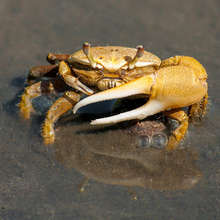It has been nearly 8 years since the death of Christopher Reeve, the famous American star of Superman, but his dream of curing spinal cord injury has yet to be fulfilled. It is estimated that, in America, there are 11,000 new cases every year while the average age of an injured person is 31. The heavy prevalence amongst young adults who require day to day supportive care and intensive rehabilitation necessitates the need to develop new theraputics.
Scientists now have a better understanding of what goes on at the site of a spinal cord injury, and have made strides in furthering our knowledge of the underlying molecular mechanisms. Like any injury anywhere in the body, there is an inflammatory response from the body’s immune system, which causes scar formation. Immune cells deposit proteins called proteoglycans that becomes a physical barrier to regenerating neurons. The scar may also cavitate, forming a cyst blocking regenerating neurons. Using enzymes, such as Chondroitanase ABC, in animal models of spinal cord injury to digest proteoglycans post injury, scientists have shown that a greater degree of regenerating neurons after injury compared to control can be accomplished.
Spinal cord injury is catastrophic, becuase neurons in the adult central nervous system do not regenerate after injury. A result of this is that all motor and sensory functions can be lost below the site of an injury. Myelin, which serves as insulation to the nerves themselves, secrete inhibitors that prevent neurons from regenerating in the spinal cord. Why that is the case has to do with the development of the nervous system in the womb.
The neurons grow in large numbers during early development and require molecular cues to stop and prevent unnecessary overgrowth. This, however, leads to the failure of these same neurons to regenerate after injury. These “myelin-associated” inhibitors including the aptly named “Nogo” could hold the key to regenerating neurons and potentially functional recovery. Pharmacologically blocking these inhibitors in animal models has been shown to assist in recovery both behaviorally and in greater numbers of regenerating axons. In fact, Novartis has just completed a Phase I human clinical trial using an anti-Nogo antibody with a Phase II trial forthcoming.
Researchers hope they will be able to fully understand and hopefully cure this terrible injury some day. But the mechanisms described above are merely pieces in a very complicated puzzle. While there are breakthroughs, more research is needed to fulfill Christopher Reeve’s dream.





